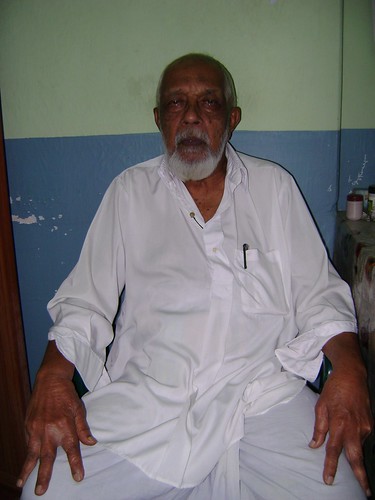White kurtha and equally white sherwani, the colored towel tucked between shoulder and the kurtha top, the colorful, a furry Jinnah cap on the head, the bright colored cardigan, the skull shaped black painted begging bowl in one hand, the large cotton sack bulging from the shoulder. The “Nagoor Khalifa” was seen only from a distance by us, kids.
(Nagoor in a place in Tamil Nadu’s Thanjavur District where the second most largest and popular Dargah – or tomb of a Sufi saint - in India is situated. Nagoor Khalifa receives alms for the Dargah.)
His costume evoked a mixed feeling of awe and amusement but nevertheless he was soft spoken and amiable. Thinking of him now, he was dressing himself in the elaborate style of the North Indians whereas the Malabar people’s style is that of sheer simplicity in attires.
In our childhood, the Padoor people’s costume reflected the agrarian preference for a simple life. The adult - especially the male population - were wearing predominantly white shades.
In our childhood, the Padoor people’s costume reflected the agrarian preference for a simple life. The adult - especially the male population - were wearing predominantly white shades.
The gents generally wore a mundu (a piece of cloth tied at the waist) and a jubba type shirt. Even the rich and the privileged used to stick to this tradition of simplicity. Although shirt was the common dress for all, there were peculiarities in the making of the shirts worn by each community.
The Muslim elders and religious scholars would have another piece of cloth, a shawl, which they hung over their shoulders. The Hindu elders would hang a neriyathu ((a piece of white cloth or shawl which at times could be having borders of golden threads or zari, symbolizing a privileged background) from their shoulder.
Some of the male members, often the working class, left their upper body uncovered except for a small towel that they used to wipe out the sweat.
Male underwear is a piece of cloth that is loosely tied to the lion and which we call konakam (kaupeenam or loin cloth). Later on this was replaced by stitched long underpants made of plaid cotton fabrics.
In general stitched clothes were avoided as far as possible; that is other than for a shirt or an occasional vest (banian).
Boys up to their teen ages wore shorts. Once they are grown up, they are required to change to the men’s clothes. The boy’s shorts would often be fitted with shoulder straps and these come to be known as “valli trousers”.

No comments:
Post a Comment